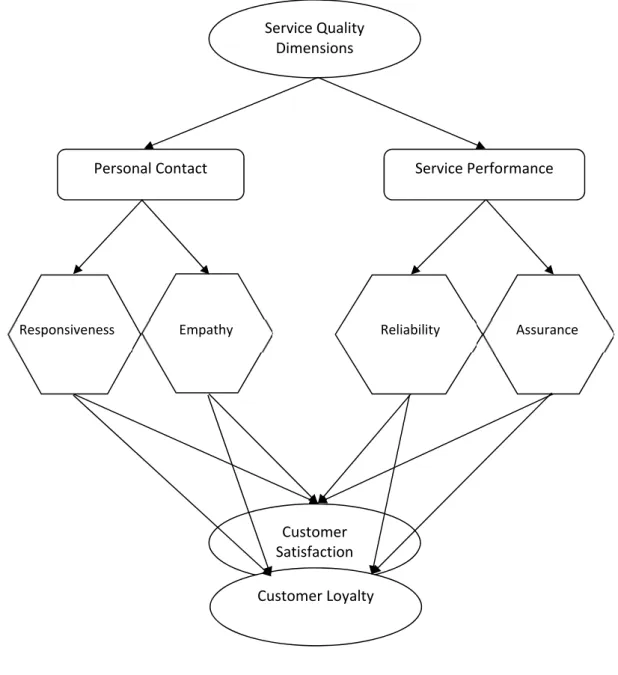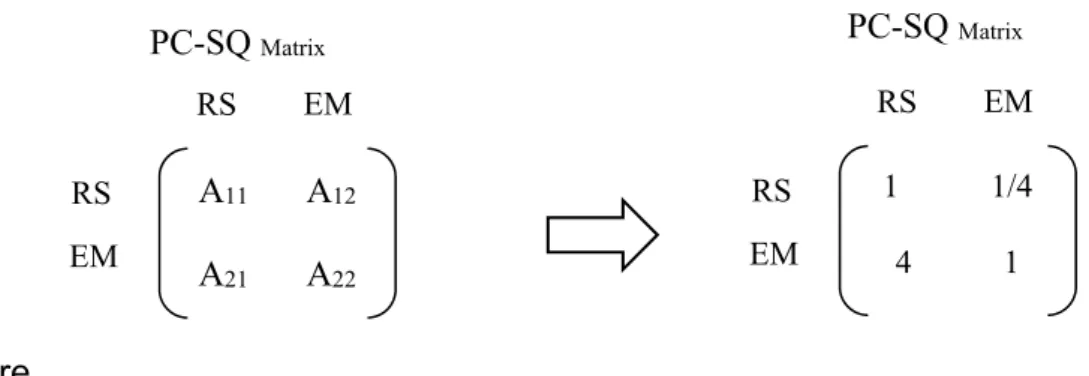The purpose of the study is to investigate the intricacies of customer satisfaction and loyalty with regard to service quality in the five-star hotels in the UAE. Results support the impact of service quality dimensions on both customer satisfaction and customer loyalty. The current study aims to investigate which service quality dimensions of UAE five-star hotels lead to customer satisfaction and loyalty.
More specifically, the study seeks to empirically assess and analyze the relationship between service quality and customer satisfaction and loyalty in five-star hotels in the United Arab Emirates through AHP analysis. Most research on customer satisfaction in the hospitality sector has been based on the SERVQUAL approach (Tontini and Bento, 2020; Chaturvedi, 2017). H01: There is no difference in the importance of service quality dimensions (responsiveness, responsiveness, reliability, security) in five-star hotels of the United Arab Emirates. 2.2) CUSTOMER SATISFACTION.
Therefore, the second hypothesis in the .. study is based on the relationship between service quality dimensions and customer satisfaction. The service quality dimensions do not affect customer satisfaction in the five-star hotels in the UAE. Primarily, there is a lack of empirical research examining the relationship between service quality, customer satisfaction and loyalty in the context of five-star hotels in the UAE.
The main objective of this study is to examine the importance of service quality dimensions and the impact of these dimensions on customer satisfaction and loyalty using an analytic hierarchy process.

THE CONTEXT OF UAE HOTELS
RESEARCH METHODOLOGY
The population of the study is five-star hotels in the United Arab Emirates, of which there are 91 in the country (Fivestaralliance, 2020). Thus, the study sample consists of 23 five-star hotels located in the city of Abu Dhabi considered as a cluster. The selected hotels provided email addresses to 579 guests who were sent questionnaires in 2020, along with some reminders to encourage them to complete the survey.
This percentage (20.03%) can be considered an acceptable sample size, as it is greater than the 10% described by Hair et al. The main tool for data collection was the survey, through a structured five-point Likert scale questionnaire. The questionnaire is divided into three sections focusing on the relevant variables of the study.
The first section measures the service quality dimensions and consists of twelve items that were constructed using the scale used by Cetin and Walls (2016) and Jani and Han (2014). The second section measures the customer satisfaction variable and consists of five items that were built with the benefit of the scale used by Padma and Ahn (2020) and Cheng and Rashid (2013). The third section measures the customer loyalty variable and consists of six items that were built with the benefit of the scale used by Cheng et al.
Numerical measures such as sales, price, defects and the like can be used as input, as can subjective opinions such as experience, preference, perception, satisfaction and performance. AHP allows for some minor inconsistency in judgment, reflected by the consistency index, which is derived from the main Eigen value. In addition, AHP uses multi-criteria decision-making techniques and hierarchical structures to evaluate different dimensions (Saaty, 2001; Kristof, 2005).
Consistency Ratio=Consistency Index/ Random Index If the consistency ratio is less than (0.1), the factor is significant.
DATA ANALYSIS AND RESULTS
Thus, we accept the alternative hypothesis: "there is a difference in the significance level of service quality dimensions". In the first stage of testing the second hypothesis, ANOVA analysis and multiple regression analysis were used to determine the direct impact of service quality on customer satisfaction. Results of ANOVA analysis in Table 3 show the contribution of service quality in explaining the variance in customer satisfaction.
The results of the multiple regression analysis in Table 3 show the influence of service quality dimensions on customer satisfaction. The value of the correlation coefficient "r" (0.648) shows a positive correlation between service quality and customer satisfaction, and the value of the determination coefficient "r2" is 0.419, which means 41.9%. In addition, the dimensions of service quality with a significant impact on customer satisfaction were “Responsiveness” (β = 0.599) and “Empathy” (β = 0.578), while.
This means that a one unit increase in service quality dimensions will increase customer satisfaction by one β value. The calculated "t" confirmed this influence and is significant at the level, therefore we accept the alternative hypothesis that confirms the influence of service quality dimensions on customer satisfaction. RI: Random Index as in Table 1. IX) Since the consistency ratio is less than (0.1), we conclude that the personal contact dimensions of service quality have a significant impact on customer satisfaction.
Since the consistency ratio is less than (0.1), we can confidently conclude that the service performance dimensions of service quality have a significant impact on customer satisfaction. ANOVA analysis and multiple regression analysis were used to determine the direct impact of service quality on customer loyalty. The results of the ANOVA analysis in Table 4 show the contribution of service quality to explaining the variance in customer loyalty.
The results of the multiple regression analysis, also in table 4, show the impact of service quality dimensions on Customer Loyalty. Furthermore, the dimensions of service quality with the highest impact on Customer Loyalty were "Responsiveness" (β=0.656) and "Empathy" (β=0.446) while the dimensions with the least impact were "Reliability" (β=0.322 ) and "Safety" (β. =0.369). Calculated "t" confirmed this impact, and is significant at the ( 0.05) level, so we can support the hypothesis, which confirms the impact of service quality dimensions on Customer Loyalty.
RI: Random Index as in Table 1. IX) Finally, since the consistency ratio is less than (0.1), we can conclude that the personal contact dimensions of service quality have a significant impact on customer loyalty. Since the consistency ratio is less than (0.1), it can be concluded that the service performance dimensions of service quality have a significant impact on customer loyalty.

DISCUSSION OF THE RESULTS
In addition, Table 4 shows the results of the correlation and the coefficient of determination, which indicate the relationship between dimensions of service quality and customer loyalty. 34;F" values show that the service quality contribution is significant in explaining the variance in customer loyalty at the level of (0.05). AHP results based on the consistency ratio show that the dimensions ' Personal contact' of service quality has a significant impact on customer loyalty, as does the 'service performance' dimension.
CONCLUSION
Based on the above, hotel management should focus on the different dimensions of service quality, thereby improving customer satisfaction and loyalty. This is possible only by employing qualified and competent staff and further educating and training them with the help of internal and external resources. On the demand side, hotels must improve all means of communication with hotel guests, thus enabling management to clearly understand and understand customer expectations and perceptions of hotel services.
The staff must be able to express and deepen the feeling of empathy with the guests along with quick responsiveness that would increase their satisfaction and loyalty. Finally, service quality should be standardized to create a sense of reliability and security, which is essential for customer satisfaction and loyalty.
LIMITATIONS AND IMPLICATIONS
The level of service quality perceived by guests needs to be addressed, aligned and improved to increase satisfaction and loyalty. An assessment of guest perceptions of service quality at luxury hotels in Kuala Lumpur, Malaysia. An empirical study of customer intentions influenced by service quality using emotional and cognitive responses, Journal of Enterprise Information Management, Vol.
Understanding customer experiences from the perspective of guests and hotel managers: Empirical findings from luxury hotels in Istanbul, Turkey, Journal of Hospitality Marketing & Management, Vol. The Effect of Switching Cost, Service Quality and Customer Satisfaction on Customer Loyalty of Mobile Service Providers in the Indian Market. Service quality and the mediating effect of corporate image on the relationship between customer satisfaction and customer loyalty in the Malaysian hotel industry.
Using the SERVQUAL model to assess service quality and customer satisfaction: An empirical study of grocery stores in Umeå.